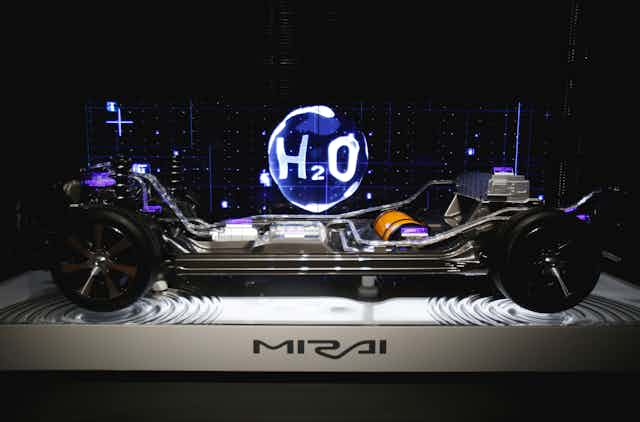We should thank Volkswagen for the wake-up call. The scandal that has engulfed the company has highlighted how an overwhelming focus on carbon dioxide emissions has oversimplified the debate about the negative impacts of all our combustion engines.
Yes, looking at CO2 works well to quantify effects on global climate and fossil resource depletion, but health impacts are a more complex story. “Dieselgate” is forcing people to realise that most vehicles also produce harmful chemically reactive substances such as nitrogen oxides or tiny particulate matter.
This insight has reached the highest ranks of UK government, where diesel subsidies may soon become re-examined. In fact particulate matter may be responsible for as many as 3m prenatal deaths globally every year, according to a recent study in Nature.
No one can tell at this point if this is the end of the diesel engine but surely now is the right moment to look towards cleaner and more sustainable ways to power a car.
Two key technologies are on the rise: electric vehicles, including hybrids, and fuel cell vehicles which run off hydrogen. The problem for electric vehicles is most people like to stay in their comfort zone and are worried about charging stations and mileage. The industry recently passed the threshold of 1m global sales in total, half of these sold since July 2014, but it is still behind targets set by the US and other governments.
Fuel cell vehicles are a better match with existing habits. Their energy comes from hydrogen stored in a high-pressure tank which then reacts with water to produce electricity that powers the drive train. This allows for mileages similar to those of conventional cars while being refuelled within a few minutes. Hyundai and Toyota already have small numbers of these vehicles on the market, and some other brands are not far behind.
Hydrogen suffers from a long-standing damaged reputation since the Hindenburg disaster in the 1930s. But lots has changed in the past eight decades. These days, the hydrogen isn’t stored in a flimsy airship but in a tank made of a highly stable carbon composite so the risk of it catching fire is minimal. Hydrogen cars can now be considered as safe as petrol or diesel cars, even in crashes.
The more recent fuelling stations extract hydrogen from water by running a current through it, effectively converting electrical energy into hydrogen fuel (you may remember doing this exact water electrolysis experiment in school). This all takes place on site, next to where the hydrogen is then stored ready for drivers to use. Doing everything in the one place – essentially all you need to bring is electricity and water – helps avoid transporting hydrogen fuel around in trucks.
A point commonly raised in this context is the fact that electricity production still largely relies on fossil fuels and that hydrogen production through electrolysis is not the most efficient way of using that primary energy. And, if one really wished to have hydrogen, the “cheaper” way was large-scale production out of natural gas. But this leads back to the important differentiation between localised emissions that harm your health and global emissions that damage the atmosphere: even if the hydrogen production involves fossil fuels, fuel cell cars are still considerably better for your lungs.
Even the global emissions will benefit from a hydrogen economy in the long run: hydrogen can be stored in tanks, thus allowing for the production of more hydrogen at times of electricity oversupply. Hence, hydrogen fuels will become an essential buffer to help smooth out increasing gaps between supply and demand in the electric grid of the future. That grid will be increasingly dominated by solar and wind power – which follow weather and daylight patterns – and nuclear power, which provides a solid base supply but cannot dynamically react to demand fluctuations either.
Economically, all three technologies are dominated by capital expenditure rather than fuel costs, so producing hydrogen at times when no one else needs the electricity may become even cheaper than today.

Hydrogen refuelling stations are stuck in the same chicken-egg problem that battery-charged vehicles had to overcome. This calls for large strategic investments to ensure that a critical mass of cars powered by fuel cells can be reached and operated, which will then drive down the costs of refuelling stations.
Given such stations can be developed and produced in the UK, rolling out hydrogen refuelling infrastructure will serve a double purpose: it paves the way for cleaner air along our roads and it gives the country an opportunity to lead rather than to react in a rising technology.
We should be more than a market for the hydrogen technology that is already embraced and pushed forward by the big technology nations: Japan, Korea, China, and the US. The recent discussion around the proposed nuclear power plant at Hinkley, French-owned and Chinese-funded, had a similar ring to it. Why is the country that once built the first civil nuclear power plant in the position of a technology-importing customer? On hydrogen, it’s time to take the lead.

